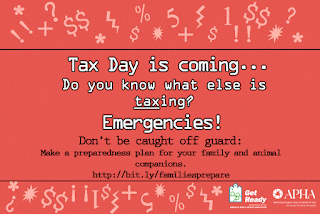Today’s guest post is by Adam Ghering, public affairs specialist with the U.S. Department of Agriculture’s Food Safety and Inspection Service.
Have you ever seen someone handling food in a way that you would never do yourself? Maybe they were preparing raw poultry and then immediately handled lettuce without washing their hands.
Or maybe they did wash their hands, but they dried them by wiping them on their pants. You would never do that, right? Then again, maybe there are things we all do that might increase our risk for foodborne illness.
USDA’s Food Safety and Inspection Service recently completed an observational study in which participants were recorded cooking in a test kitchen to see if they handled food unsafely while cooking.
Preliminary results show that participants didn’t do well preventing bacteria from spreading around their kitchen or verifying that their turkey burgers were safe to eat. Check out the list of top five food safety mistakes participants made that increased their risk of illness:
• 97 percent of the time participants should have washed their hands, they failed to do so successfully. Of the 1,195 recorded points when hand-washing was necessary to control possible bacteria transfer, participants failed to wash their hands successfully more than 1,150 times.

• 48 percent of participants cross-contaminated spice containers due to lack of hand-washing. Because they didn’t wash their hands adequately, harmless tracer microorganisms that act just like human pathogens spread throughout the kitchen.
Campylobacter and salmonella, bacteria found in poultry products, have been shown to survive on food contact surfaces for up to four and 32 hours, respectively.
• 5 percent of participants transferred bacteria to salads they prepared and would have immediately served if cooking at home.
• 66 percent of participants did not used a food thermometer while preparing turkey burgers during the study. Some participants used color and feel instead to determine if the burgers were safe to eat. Using a food thermometer to measure the internal temperature is the only way to verify meat and poultry are safe to eat.
• 45 percent did not cook the turkey burger to the minimum safe internal temperature of 165 degrees. Not cooking poultry to at least 165 degrees can lead to bacteria surviving the cooking process.
The good news is that cooking food safely is in your hands and doing so can help keep you and your family healthy. Control the transfer of bacteria in your kitchen by always following the five steps of hand-washing after touching raw meat and poultry. Know that you have destroyed any bacteria in your meat and poultry by cooking to the proper internal temperature.
If you are cooking a burger, insert the thermometer through the side of the burger, and ensure the probe reaches the center of the burger, which is the coldest portion. Cook meat and poultry to these internal temperatures:
• Beef, pork, lamb and veal — steaks, roasts and chops: 145 degrees with a three-minute rest
• Ground beef: 160 degrees
• Poultry, whole and ground: 165 degrees
Once you have cooked your foods, make sure to pack the leftovers up and refrigerate them within two hours. In hot summer weather when it is above 90 degrees, refrigerate them within one hour.
For more food safety information, call the USDA Meat and Poultry Hotline at 1-888-674-6854, Monday through Friday, from 10 a.m. to 6 p.m. Eastern time, or email or chat at AskKaren.gov.
 From fuzzy pups to huggable gorillas, our calendar has adorableness covered. Each month also features helpful information on disaster and emergency preparedness from Get Ready.
From fuzzy pups to huggable gorillas, our calendar has adorableness covered. Each month also features helpful information on disaster and emergency preparedness from Get Ready.

































